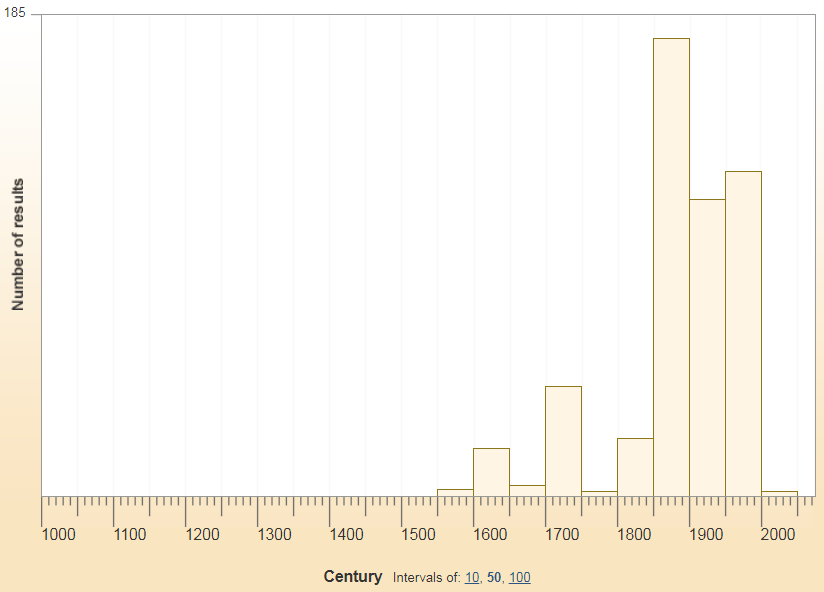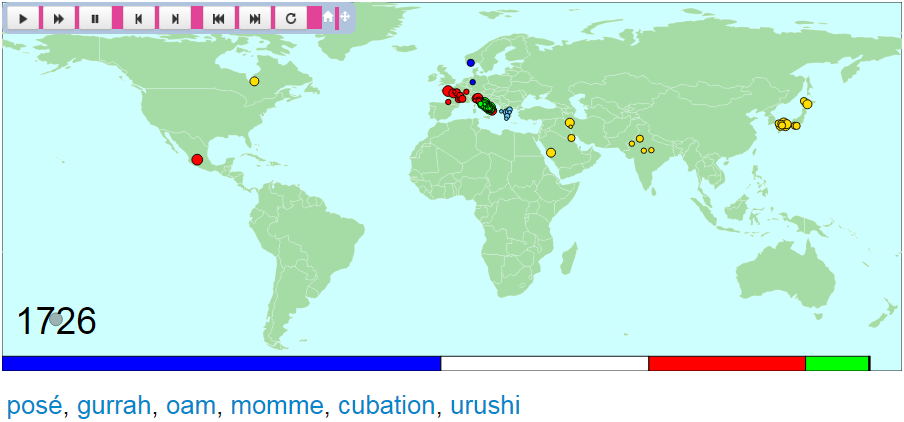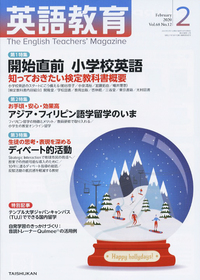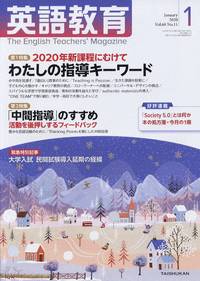2020-08-28 Fri
■ #4141. 1150年を越えて残らなかった古英語単語は OED から外されている [oed][oe][doe][periodisation][lexicography][lexicology][manuscript]
OED では古英語の単語はどのように扱われているか.この辺りの話題は,OED Online の提供する Old English in the OED を通じて知ることができる.
OED は,原則として1150年を超えて残らなかった古英語単語は取り扱わないと宣言している.歴史的原則を貫く OED としては,このように除外される単語もれっきとした英単語であるとは認識しているはずだ.しかし,同辞書編纂の長い歴史の当初からの方針であり,別途 The Dictionary of Old English (DOE) も編纂中であることから,現実的な選択肢としてそのような原則を立てているのだろう.それでも,1150年より前に文証され,この境の年を生き延びた7500語ほどの古英語単語が収録されているという事実は指摘しておきたい.
古英語期の内部の時期区分についても,新版 OED では3期に分けるという新しい方針を示している.'early OE' (600--950), 'OE' (950--1100), and 'late OE' (1100--1150) の3期である.主たる古英語写本約200点のうち,ほとんどが 'OE' (950--1100) に由来し,その点で証拠の偏りがあることは致し方がない(それ以前の 'early OE' (600--950) に属するものは20点未満).この3期区分は粗くはあるが,できるかぎり学術的正確性を期すための方法であり,写本年代や語の初出年代の記述にも有効に用いられている.
2020-08-27 Thu
■ #4140. 英語に借用された日本語の「いつ」と「どのくらい」 [oed][japanese][borrowing][loan_word][lexicology][statistics]
「#3872. 英語に借用された主な日本語の借用年代」 ([2019-12-03-1]),「#142. 英語に借用された日本語の分布」 ([2009-09-16-1]) などの記事で見てきたように,英語には意外と多くの日本語単語が入り込んでいる.両言語の接触は16世紀以降のことであり (cf. 「#4131. イギリスの世界帝国化の歴史を視覚化した "The OED in two minutes"」 ([2020-08-18-1])),日本語単語の借用は英語史の観点からすると比較的新しい現象とはいえるが,そこそこの存在感を示しているといってよい.このことは「#45. 英語語彙にまつわる数値」 ([2009-06-12-1]),「#126. 7言語による英語への影響の比較」 ([2009-08-31-1]),「#2165. 20世紀後半の借用語ソース」 ([2015-04-01-1]) などでも触れてきた.
OED Online には,様々なパラメータにより,どの時代にどのくらいの単語が英語語彙に加わったかを視覚化してくれる "Timelines" という便利な機能がある.たとえば「日本語が語源である単語」を指定すると,日本語からの借用語が「いつ」「どのくらい」英語に流入したのかを即座にグラフ化してくれる.その結果は以下の通り.

数としては19世紀後半から爆発的に増え始め,現代に至ることがわかる.19世紀後半といえば,もちろん我が国が英米を含む西洋諸国との濃密な接触を開始した幕末・明治維新の時代である.
棒グラフをクリックすると,該当する単語のリストも得られる.ここまで簡単な操作でグラフ化してくれるとは本当に便利な世の中になったなあ.
2020-08-25 Tue
■ #4138. フランス借用語のうち中英語期に借りられたものは4割強で,かつ重要語 [oed][french][latin][loan_word][statistics][lexicology][borrowing]
英語語彙史において,フランス借用語の流入のピークが中英語期にあったことはよく知られている.このことは「#117. フランス借用語の年代別分布」 ([2009-08-22-1]),「#2162. OED によるフランス語・ラテン語からの借用語の推移」 ([2015-03-29-1]),「#2385. OED による,古典語およびロマンス諸語からの借用語彙の統計 (2)」 ([2015-11-07-1]) などのグラフを見れば,容易に理解できるだろう.
OED が提供している Middle English: an overview の "Borrowing from Latin and/or French" を読んでいたところ,この問題と関連して具体的な数字が挙げられていたので紹介しておきたい.
By 1500, over 40 per cent of all of the words that English has borrowed from French had made a first appearance in the language, including a very high proportion of those French words which have come to play a central part in the vocabulary of modern English. By contrast, the greatest peak of borrowing from Latin was still to come, in the early modern period; by 1500, under 20 per cent of the Latin borrowings found in modern English had yet entered the language.
フランス借用語の流入のピークは中英語期であり,ラテン借用語のピークは近代英語期だったという順序についての指摘はその通りだが,ここで目を引くのは,引用の最初に挙げられている40%強という数字である.現代英語語彙におけるフランス借用語のうち40%強が中英語期の借用であり,しかも現在も中核的な語彙として活躍しているという.言い方をかえれば,この時期に借用されたフランス単語は,古株ながらも現在に至るまで有用性を保ち続けているものが多いということである.残存率が高いと言ってもよい.
それに対するラテン借用語の残存率は,残念ながら数字で表わされていないが,フランス語のそれよりもずっと低いと考えられる.新参者でありながら,現在まで残っていない(あるいは少なくとも有用な語として残っていない)ものが多いのである(cf. 「#478. 初期近代英語期に湯水のように借りられては捨てられたラテン語」 ([2010-08-18-1]),「#1409. 生き残ったインク壺語,消えたインク壺語」 ([2013-03-06-1])).英語史において,このフランス語とラテン語の語彙的影響の差異は興味深い.
今回の話題と関連して,「#3180. 徐々に高頻度語の仲間入りを果たしてきたフランス・ラテン借用語」 ([2018-01-10-1]),「#2667. Chaucer の用いた語彙の10--15%がフランス借用語」 ([2016-08-15-1]),「#2283. Shakespeare のラテン語借用語彙の残存率」 ([2015-07-28-1]) なども参照されたい.
2020-08-20 Thu
■ #4133. OED による英語史概説 [oed][lexicology][lexicography][historiography][toc][hel][hel_education]
OED のサイトには当然ながら英語史に関する情報が満載である.じっくりと読んだことはなかったのだが,掘れば掘るほど出てくる英語史のコンテンツの宝庫だ.OED が運営しているブログがあり,そこから英語史概説というべき記事を以下に挙げておきたい.
OED らしく語彙史が中心となっているのはもちろん,辞書編纂の関心が存分に反映されたユニークな英語史となっており,実に読み応えがある.とりわけ古い時代の英語の evidence や manuscript dating の問題に関する議論などは秀逸というほかない(例えば Middle English: an overview の "Our surviving documents" などを参照).また,終着点となる20世紀の英語の評論などは,今後の英語を考える上で必読ではないか.
是非,以下をじっくり読んでもらえればと思います.
・ Old English --- an overview
- Historical background
- Some distinguishing features of Old English
- The beginning of Old English
- The end of Old English
- Old English dialects
- Old English verbs
- Derivational relationships and sound changes
- cf. Old English in the OED
・ Middle English: an overview
- Historical period
- The most important linguistic developments
- A multilingual context
- Borrowing from early Scandinavian
- Borrowing from Latin and/or French
- Pronunciation
- A period characterized by variation
- Our surviving documents
・ Early modern English --- an overview
- Boundaries of time and place
- Variations in English
- Attitudes to English
- Vocabulary expansion
- 'Inkhorn' versus purism
- Archaism and rhetoric
- Regulation and spelling reform
- Fresh perspectives: Old English and new science
・ Nineteenth century English: an overview
- Communications and contact
- Local and global English
- Recording the language
- A changing language: grammar and new words
- The science of language
・ Twentieth century English: an overview
- Circles of English
- Convergence: the birth of cool
- Restrictions on language
- Lexis: dreadnought and PEP talk
- Modern English usages
2020-08-18 Tue
■ #4131. イギリスの世界帝国化の歴史を視覚化した "The OED in two minutes" [oed][map][lexicology][lexicography][philology][history][web_service]
昨日の記事「#4130. 英語語彙の多様化と拡大の歴史を視覚化した "The OED in two minutes"」 ([2020-08-17-1]) で紹介した同じコンテンツを,異なる角度から改めて眺めてみたい.The OED in two minutes で公開されている英語語彙史地図のコンテンツである.
中英語の始まりとなる1150年から再生して1年ごとに時間を進めていくと,しばらくは動きがヨーロッパ内部に限られており,さしておもしろくもないのだが,15世紀後半になってくると中東や北アフリカなどに散発的に点が現われてくる.そして,16世紀後半になると新大陸やインド方面にも点がポツポツしてきて,日本も舞台に登場してくる.この状況は17,18世紀にかけて稀ではなくなってくる.次に注目すべき動きが出てくるのは,18世紀後半のオセアニア,太平洋,南アフリカといった南半球を中心とした海洋地域である.19世紀に入るとアフリカや東南アジアを含めた世界の広域に点が打たれるようになり,同世紀後半には南アメリカも加わる.20世紀はまさにグローバルである.
実におもしろい.同時に,実に恐ろしい.16世紀後半から19世紀終わりまでの時間枠に関するかぎり,そのままイギリスの世界帝国化の足跡を語彙史の観点からパラフレーズしたコンテンツに見えてきたからだ.直接・間接にイギリスの支配権の及ぶ領土を塗りつぶした世界史の地図は「軍事的な」地図として見慣れているし,ある意味で分かりやすい.しかし,今回のような「語彙史的な」地図がそれと多かれ少なかれ一致するというのは,何とも薄気味悪い.そして,後者の地図が,OED という英語文献学の粋というべき学術的な成果物を利用して作成されていること,またその辞書それ自身が大英帝国の最盛期である19世紀半ばの企画の産物であることを思い出すとき,薄気味悪さ以上に,得体のしれない恐ろしさを感じる.
OED は学術的(文献学的)偉業を体現するツールであり,その点で私も賞賛を抑えることができない.しかし,その事実を認めつつ,それ自体が,毀誉褒貶相半ばする近代世界史の産物であることは肝に銘じておきたい.関連して以下の記事も参照.
・ 「#3020. 帝国主義の申し子としての比較言語学 (1)」 ([2017-08-03-1])
・ 「#3021. 帝国主義の申し子としての比較言語学 (2)」 ([2017-08-04-1])
・ 「#3376. 帝国主義の申し子としての英語文献学」 ([2018-07-25-1])
・ 「#3603. 帝国主義,水族館,辞書」 ([2019-03-09-1])
・ 「#3767. 日本の帝国主義,アイヌ,拓殖博覧会」 ([2019-08-20-1])
2020-08-17 Mon
■ #4130. 英語語彙の多様化と拡大の歴史を視覚化した "The OED in two minutes" [oed][map][lexicology][borrowing][lexicography][philology][statistics][web_service][hel_education]
The OED in two minutes に,中英語の始まる1150年から2010年までの英語(借用)語彙史を地図上で視覚化してダイジェストで示すコンテンツが公表されている.これは凄いコンテンツ.実にみごとに英語語彙の多様化と拡大の歴史が表現されており,しかもいろいろな意味で考えさせられる.こちらからどうぞ.

地図の下にある色付きの帯は,現代英語における語種ごとの総トークン頻度を表わしている(背後で利用されているデータベースは Google Ngrams の1970--2008年の部分だという).試しに2010年現在の地図に示される統計をみてみると,総トークン頻度にして,ゲルマン系の語彙(青帯)が49%,英語要素に基づく複合語など(白帯)が26%なので,ここまでで全体の3/4である.ロマンス系の語彙(赤帯)が18%,ラテン語が7%,そしてその他が0.2%だ.英語史では語彙の歴史は借用の歴史であるというのが定番だが,トークン頻度で考える限り,現在でも英語の語彙は圧倒的にアングロサクソン(あるいはゲルマン)的であるといってよいことになる.この事実については「#3400. 英語の中核語彙に借用語がどれだけ入り込んでいるか?」 ([2018-08-18-1]) と,そこに張ったリンク先の記事を参照.
地図左下の年号に重なって描かれている灰色のバブルは,高頻度かつ多数の単語が加わった年ほど大きくなり,低頻度かつ少数の単語が加わったにすぎない年には小さくなる.17世紀を通じて相対的に大きかったバブルが,18世紀にかけてしぼんでいく様子も興味深い (cf. 「#2995. Augustan Age の語彙的保守性」 ([2017-07-09-1]),「#203. 1500--1900年における英語語彙の増加」 ([2009-11-16-1]),「#4070. 18世紀の語彙的低迷のなぞ」 ([2020-06-18-1])) .
英語(語彙)史を大づかみするには,このようなダイジェストの視覚コンテンツが威力を発揮する.
2020-07-31 Fri
■ #4113. 日本語のコロナ関連語録 [japanese][neologism][waseieigo][katakana][borrowing][shortening][false_friend][semantic_change][lexicology][word_formation][sociolinguistics]
戦争,飢餓,疫病など苦難の時代には,言語も荒波に揉まれてきた.目下のコロナ禍では言語の何が変わるのだろうか.すでにいくつか候補が挙げられるようにも思う.
たとえば,英語でいえば,「#4105. 銅像破壊・撤去,新PC,博物館」 ([2020-07-23-1]) でみたように,BLM運動との関連で人種差別を喚起させる特定の語句や表現が槍玉にあげられたり,自主的に置換されるという事態が生じている.これは厳密にいえばコロナ禍の直接的な影響によるものではないが,既存の社会問題がコロナ下の不安と憤懣のなかで増幅して爆発した結果とみなすならば,間接的には関与しているといえる.
日本語では,様々なコロナ関連表現が,きわめて短期間のうちに生まれ定着してきたことは,肌身に感じられるだろう.7月25日(土)の読売新聞朝刊の特別面(11面)に「コロナ時代の言葉たち」と題する特集が掲載されていた.出現順に挙げるとおもしろそうだが,順番は意識せずに一覧を掲げてみる.
3密,8割削減,10万円給付,Go To トラベル,PCR,Skype,WHO,Zoom,あつ森,アクリル板,アビガン,アベノマスク,アマビエ・アマビコ,ウーバーイーツ,ウィズコロナ,ウェブ面接,エクモ,エッセンシャルワーカー,オーバーシュート,オンライン授業,クラスター,クルーズ船,コロナ (COVID-18),ステイホーム,スペイン風邪,チャーター便,テレワーク,ドライブスルー,ニューノーマル,パンデミック,フェースシールド,ライブハウス,リモートマッチ,ロックダウン,医療崩壊,一世休校,院内感染,屋形船,感染経路不明,緩み,休業要請,緊急事態宣言,県をまたぐ移動,抗原検査,抗体検査,行動変容,再生産数,持ちこたえている,自粛警察,社会的距離(ソーシャル・ディスタンス),手作りマスク,手指消毒,手洗い,収束/終息,出口戦略,新しい生活様式,瀬戸際,正念場,接触確認アプリ,接触感染,専門家会議,巣ごもり,大阪モデル,第2波,置き配,昼カラオケ,転売ヤー,東京アラート,濃厚接触,買い占め,飛沫感染,不要不急の外出自粛,武漢,分散登校,無観客,夜の街,臨時休講
新語(句)の形成法としては,和製英語あり,借用あり,漢熟語あり,省略ありと,なかなかに新旧の方法が入り交じった賑やかな様相を呈している.新語(句)というよりは,既存の語(句)に新たな語義が付け加えられたり,ニュアンスが変化したりという,意味変化の事例も多い.この一覧を用いて語形成や意味論の基本を論じる講義を準備できるのではないかとすら感じた.
2020-07-14 Tue
■ #4096. 3重語,4重語,5重語の例をいくつか [doublet][etymology][loan_word][borrowing][lexicology][synonym]
昨日の記事「#4094. 2重語の分類」 ([2020-07-13-1]) で取り上げた2重語 (doublet) の上を行き,3重語,4重語,5重語などの「多重語」の例を,『新英語学辞典』 (344) よりいくつか挙げたい.本ブログ内の関連する記事へのリンクも張っておく.
(a) 3重語 (triplet)
・ hale (< ME hal, hale, hail 〔北部方言〕 < OE hāl), whole (< ME hol, hool, hole 〔南部方言〕 < OE hāl), hail (← ON heill) (cf. 「#3817. hale の語根ネットワーク」 ([2019-10-09-1]))
・ place (← OF place < L platēa), plaza (← Sp. plaza < L platēa), piazza (← It. piazza < L platēa)
・ hotel (← F hôtel < OF hostel < ML hospitāle), hostel (← OF hostel < ML hospitāle), hospital (← ML hospitāle) (cf. 「#171. guest と host (2)」 ([2009-10-15-1]))
・ a, an, one (cf. 「#86. one の発音」 ([2009-07-22-1]))
(b) 4重語 (quadruplet)
・ corpse (← MF corps < OF cors < L corpus), corps (← MF corps < OF cors < L corpus), corpus (← L corpus), corse (← OF cors < L corpus)
(c) 5重語 (quintuplet)
・ palaver (← Port palavra < L parabola), parable (← OF parabole < L parabola), parabola (← L parabola), parley (← OF parlée < L parabola), parole (← F parole < L parabola)
・ discus, disk, dish, desk, dais (cf. 「#569. discus --- 6重語を生み出した驚異の語根」 ([2010-11-17-1]))
・ senior, sire, sir, seigneur, signor
なお,日本語からの4重語の例として,カード,カルタ,カルテ,チャートが挙げられている (cf. 「#1027. コップとカップ」 ([2012-02-18-1])).
・ 大塚 高信,中島 文雄(監修) 『新英語学辞典』 研究社,1982年.
2020-07-13 Mon
■ #4095. 2重語の分類 [doublet][etymology][loan_word][borrowing][lexicology][synonym]
同一語源にさかのぼるが,何らかの理由で形態と意味が異なるに至った1組の語を2重語 (doublet) と呼ぶ.本ブログでも様々な種類の2重語の例を挙げてきた(特に詳細な一覧は「#1723. シップリーによる2重語一覧」 ([2014-01-14-1]) と「#1724. Skeat による2重語一覧」 ([2014-01-15-1]) を参照).2重語にはいくつかのタイプがあるが,『新英語学辞典』 (343--44) に従って,歴史言語学的な観点から分類して示そう.
(1) 借用経路の異なるもの.
・ sure (← OF sur < L sēcūrus), secure (← L sēcūrus)
・ poor(← OF povre, poure < L pauper), pauper (← L pauper)
・ filibuster (← Sp. filibustero ← Du. vrijbuiter), freebooter (← Du. vrijbuiter)
・ caste (← Port. casta < L castus), chaste (← OF chaste < L castus)
・ madam(e) (← OF ma dame < L mea domina), Madonna (← It. ma donna < L mea domina)
(2) 本来語と外来語によるもの.
・ shirt (< OE scyrte < *skurtjōn-), skirt (← ON skyrta < *skurtjōn-)
・ naked (< OE nacod, næcad), nude (← L nūdus)
・ brother (< OE brōðor), friar (← OF frere < L frāter)
・ name (< OE nama), noun (← AN noun < L nōmen)
・ kin (< OE cynn), genus (← L genus)
(3) 同一言語から異なる時期に異なる形態あるいは意味で借用されたもの.
・ cipher (← OF cyfre ← Arab. ṣifr), zero (← F zéro ← It. zero ← Arab. ṣifr)
・ count (← OF conter < L computāre), compute (← MF compoter < L computāre)
・ annoy (← OF anuier, anoier < L in odio), ennui (← F ennui < OF enui < L in odio)
(4) 同一言語の異なる方言からの借用によるもの.(cf. 「#76. Norman French vs Central French」 ([2009-07-13-1]),「#95. まだある! Norman French と Central French の二重語」 ([2009-07-31-1]),「#388. もっとある! Norman French と Central French の二重語」 ([2010-05-20-1]))
・ catch (← ONF cachier), chase (← OF chacier)
・ wage (← ONF wagier), gage (← OF guage)
・ warden (← ONF wardein), guardian (← OF guardien)
・ warrant (← ONF warantir), guarantee (← OF guarantie)
・ treason (← AN treyson < OF traison < L traditionis), traditiion (← OF tradicion < L traditionis) (cf. 「#944. ration と reason」 ([2011-11-27-1]))
(5) 英語史の中で同一語が,各種の形態変化により分裂 (split) し,二つの異なる語になったものがある.本来語にも借用語にも認められる.
・ outermost, uttermost
・ thresh, thrash
・ of, off
・ than, then (cf. 「#1038. then と than」 ([2012-02-29-1]))
・ through, thorough (cf. 「#55. through の語源」 ([2009-06-22-1]))
・ wight, whit
・ worked, wrought (cf. 「#2117. playwright」 ([2015-02-12-1]))
・ later, latter (cf. 「#3616. 語幹母音短化タイプの比較級に由来する latter, last, utter」 ([2019-03-22-1]),「#3622. latter の形態を説明する古英語・中英語の "Pre-Cluster Shortening"」 ([2019-03-28-1]))
・ to, too
・ mead, meadow
・ shade, shadow (cf. 「#194. shadow と shade」 ([2009-11-07-1]))
・ twain, two (cf. 「#1916. 限定用法と叙述用法で異なる形態をもつ形容詞」 ([2014-07-26-1]))
・ fox, vixen
・ acute, cute
・ example, sample (cf. 「#548. example, ensample, sample は3重語」 ([2010-10-27-1]))
・ history, story
・ mode, mood (cf. 「#3984. 言語学でいう法 (mood) とは何ですか? (2)」 ([2020-03-24-1]))
・ parson, person (cf. 「#179. person と parson」 ([2009-10-23-1]))
・ fancy, fantasy
・ van, caravan
・ varsity, university
・ flour, flower (cf. 「#183. flower と flour」 ([2009-10-27-1]))
・ travail, travel
上記の2重語の例のいくつかについては,本ブログでも記事で取り上げたものがあり,リンクを張っておいた.その他の2重語についても両語を検索欄に入れればヒットするかもしれない.
・ 大塚 高信,中島 文雄(監修) 『新英語学辞典』 研究社,1982年.
2020-07-10 Fri
■ #4092. shit, ordure, excrement --- 語彙の3層構造の最強例 [lexicology][synonym][loan_word][borrowing][french][latin][lexical_stratification][swearing][taboo][slang][euphemism]
いかがでしょう.汚いですが,英語の3層構造を有便雄弁に物語る最強例の1つではないかと思っています.日本語の語感としては「クソ」「糞尿」「排泄物」ほどでしょうか.
英語語彙の3層構造については,本ブログでも「#3885. 『英語教育』の連載第10回「なぜ英語には類義語が多いのか」」 ([2019-12-16-1]) やそこに張ったリンク先の記事,また (lexical_stratification) などで,繰り返し論じてきました.具体的な例も「#334. 英語語彙の三層構造」 ([2010-03-27-1]),「#1296. 三層構造の例を追加」 ([2012-11-13-1]) で挙げてきました.
もっと挙げてみよと言われてもなかなか難しく,典型的な ask, question, interrogate や help, aid, assistance などを挙げて済ませてしまうのですが,決して満足はしておらず,日々あっと言わせる魅力的な例を探し求めいました.そこで,ついに標題に出くわしたのです.Walker の swearing に関する記述を読んでいたときでした (32) .
A few taboo words describing body parts started out as the 'normal' forms in Old English; one of the markers of the status difference between Anglo-Norman and Old English is the way the 'English' version became unacceptable, while the 'French' version became the polite or scientific term. The Old English 'scitte' gave way to the Anglo-Norman 'ordure' and later the Latin-via-French 'excrement'.
これに出会ったときは,(鼻をつまんで)はっと息を呑み,目を輝かせてしまいました.
shit は古英語 scitte にさかのぼる本来語ですが,古英語での意味は「(家畜の)下痢」でした. 動詞としては接頭辞つきで bescītan (汚す)のように長母音を示していましたが,後に名詞からの影響もあって短化し,中英語期に s(c)hite(n) (糞をする)が現われています.名詞の「糞」の語義としては意外と新しく,初期近代英語期の初出です.
ordure は,古フランス語 ordure から中英語期に入ったもので,「汚物」「卑猥な言葉」「糞」を意味しました.語根は horrid (恐ろしい)とも共通します.
excrement は初期近代英語期にラテン語 excrēmentum (あるいは対応するフランス語 excrément)から借用されました.
現在では本来語の shit は俗語・タブー的な「匂い」をもち,その婉曲表現としては「匂い」が少し緩和されたフランス語 ordure が用いられます.ラテン語 excrement は,さらに形式張った学術的な響きをもちますが,ほとんど「匂い」ません.
以上,失礼しました.
・ Walker, Julian. Evolving English Explored. London: The British Library, 2010.
2020-07-09 Thu
■ #4091. DOST と SND --- スコットランド英語版の OED [scots_english][oed][dictionary][lexicography][lexicology][world_englishes][laos]
世界の諸英語 (world_englishes) の種類は数あれど,スコットランド英語 (scots_english) は英語史において特別な位置づけにある.というのは,イングランド英語を除けば,スコットランド英語は,直接的に古英語に由来する唯一の英語変種だからである.一般的にはイギリスで話される英語の(訛った)1変種にすぎないという見方が普通だろうが,歴史的にみればイングランド英語と並んで最長の連続性を誇る由緒正しい変種なのである.その略史については「#1719. Scotland における英語の歴史」 ([2014-01-10-1]) を参照されたい.
この由緒正しい Scots English については,OED に匹敵する堂々たる歴史的な辞書が編纂されている.2つ紹介しよう.1つめは,DOST こと Craigie et al. 編の A Dictionary of the Older Scottish Tongue である.カバーする時代は,スコットランド英語がイングランド英語とは異なる独立した変種として発展した中世後期から,独立性を失っていった1700年頃までである.ただし,情報収集方針は時代によって異なっており,1600年までは包括的に収録されているといってよいが,17世紀分についてはスコットランドに特化した地域変種の辞書となっている.
また,編纂方針について変遷が重ねられてきたという事情もある.編纂の前半期には,同一の語源に遡るものでも語形が異なる場合には,異なる見出しを立てるという方針が採られていたが,R の項に差し掛かってからは新編集長の Dareau のもとで to と till を同じ見出しのなかで扱うなど異なる方針が採られることになった.背景には,編纂作業に関わる時間やリソースの逼迫があったようだ.
一方,1700年以降のスコットランド英語を担当しているのが,もう1つの辞書,SND こと Scottish National Dictionary である.こちらも歴史的原則に立って編纂されているが,スコットランド英語がすでに独立性をほぼ失っていた時代を対象としていることもあり,1地域変種辞書というべき位置づけとなっている.
この DOST と SND を合わせて,スコットランド英語版の OED とみなしてよいだろう.実際,両者は Dictionary of the Scots Language の名のもとに統合され,オンラインでアクセスできるようになっている.
ちなみに,LALME や LAEME に対応する,古いスコットランド英語についての方言地図も作成されており A Linguistic Atlas of Older Scots (LAOS) としてこちらからアクセスできる.
以上,Durkin (1152--53) を参照して執筆した.
・ Craigie, William A., Adam Jack Aitken, James A. C. Stevenson, and Marace Dareau, eds. A Dictionary of the Older Scottish Tongue. Oxford: OUP, 1931--2002. Available online as part of Dictionary of the Scots Language at https://dsl.ac.uk/ .
・ Grant, William and David D. Murison, eds. The Scottish national Dictionary: Designed Partly on Regional lines and Partly on Historical Principles, and Containing All the Scottish Words Known to be in Use or to have been in Use Since c. 1700. Edinburgh: Scottish National Dictionary Association, 1931--76. Supplement 2005. Available online as part of Dictionary of the Scots Language at https://dsl.ac.uk/ .
・ Williamson, Keith. A Linguistic Atlas of Older Scots, Phase 1: 1380--1500 (LAOS). 2007. Available online at http://www.lel.ed.ac.uk/ihd/laos1/laos1.html .
・ Durkin, Philip. "Resources: Lexicographic Resources." Chapter 73 of English Historical Linguistics: An International Handbook. 2 vols. Ed. Alexander Bergs and Laurel J. Brinton. Berlin: Mouton de Gruyter, 2012. 1149--63.
2020-06-26 Fri
■ #4078. LEME = Lexicons of Early Modern English [leme][lexicography][dictionary][emode][lexicology][website][link][cawdrey][mulcaster][etymological_respelling]
一昨日,昨日の記事 ([2020-06-24-1], [2020-06-25-1]) で,古英語には DOE という辞書が,中英語には MED という辞書が揃っていることをみたが,(初期)近代英語期の辞書はないのだろうか.
初期近代英語辞書は古くより望まれていたが,現状としてはない.Shakespeare の辞書や The King James Bible のコンコーダンスはあるが,同時代を広く扱う辞書は存在していないのである.
しかし,そのような辞書の代わりとなるようなデータベースは存在する.標題の LEME (= Lexicons of Early Modern English) である.これは初期近代英語期に文証される語を辞書編纂用に収集したリストというよりも,当時書かれた1400冊ほどの辞書や語彙集をそのままデータベース化したものである.現代英語の語彙に対応させると6万を超える語彙項目を数えるという.先行の Early Modern English Dictionaries Database (EMEDD) を受けて発展してきたプロジェクトで,およそ1480--1755年の間に書かれた辞書類の印刷本や写本が収集されてきた.公式サイトの案内によると「辞書類」とは "monolingual, bilingual, and polyglot dictionaries, lexical encyclopedias, hard-word glossaries, spelling lists, and lexically-valuable treatises" とのことである.このデータベース全体を一種の複合辞書とみなすことはできるが,現代人が現代の辞書編纂技術をもって当時の語を記述したという意味での「辞書」ではなく,あくまで同時代の人々の語感が込められた(ある意味で新歴史主義的な)「辞書」ということになろう.
私自身は LEME をまったく使いこなせていないが,様々な検索が可能なようで,一度じっくりと勉強したいと思っている.辞書編纂はいくぶんなりとも意識的な語彙の選択・使用を前提としているという点で,そうではない一般のコーパスにみられる語彙の選択・使用と比較してみるとおもしろいかもしれない.例えば,初期近代英語期に特徴的な語源的綴字 (etymological_respelling) の使用を調査するとき,辞書に示される綴字は LEME で,一般の綴字は EEBO corpus などで調べて比較してみるという研究が考えられる.
初期近代英語期の辞書事情は,それ自体が英語史上の1つの研究テーマとなりうる懐の深さがある.本ブログでも,以下を始めとして多くの記事で取り上げてきた.そこで触れてきた辞書も,およそ LEME に含まれているようだ.
・ 「#603. 最初の英英辞書 A Table Alphabeticall (1)」 ([2010-12-21-1])
・ 「#604. 最初の英英辞書 A Table Alphabeticall (2)」 ([2010-12-22-1])
・ 「#1609. Cawdrey の辞書をデータベース化」 ([2013-09-22-1])
・ 「#609. 難語辞書の17世紀」 ([2010-12-27-1])
・ 「#610. 脱難語辞書の18世紀」 ([2010-12-28-1])
・ 「#1995. Mulcaster の語彙リスト "generall table" における語源的綴字」 ([2014-10-13-1])
・ 「#3224. Thomas Harman, A Caveat or Warening for Common Cursetors (1567)」 ([2018-02-23-1])
・ 「#3544. 英語辞書史の略年表」 ([2019-01-09-1])
2020-06-18 Thu
■ #4070. 18世紀の語彙的低迷のなぞ [lexicology][lexicography][oed][register]
「#2995. Augustan Age の語彙的保守性」 ([2017-07-09-1]) で触れ,「#203. 1500--1900年における英語語彙の増加」 ([2009-11-16-1]) より確認されるように,18世紀は語彙の増加が相対的に低迷していた時期といわれる.前時代に語彙を借用しすぎたという事情もあるし,18世紀自体が言語文化的に保守的だったということも指摘されている.
18世紀の語彙的低迷は主として OED に基づいて得られた洞察であることから,OED の語彙収集方法や編纂技術上の限界から,語彙が低迷しているように「見える」にすぎず,さらにデータを掘って調査を進めていけば,実は語彙的低迷の事実などなかったのではないか,という可能性も浮上してきそうだ.
しかし,Durkin (1154) は,以下のように巨大な18世紀のテキスト・データベース ECCO の力を借りてもやはり18世紀の語彙的低迷は本当のことらしいと考えている.
The availability of databases of historical texts is changing all the time, and is having a truly transforming effect on the OED's historical lexicography. There remain some areas of difficulty and of controversy. Notoriously, the coverage of 18th-century vocabulary in the first and second editions of the OED is not so comprehensive as its coverage of other periods . . . ; however, availability of the majority of surviving printed 18th-century material in electronically searchable form (especially through Eighteenth-Century Collections Online [ECCO], Gage Gengage Learning 2009) suggests that there is genuinely a dip in lexical productivity in the 18th century, at least in those varieties and registers which are reflected by surviving printed sources. In many instances where the documentation of the OED presented a gap in the 18th century, it remains impossible to fill this gap, even with the help of such resources as ECCO. Exploring and explaining this further will be a major task for English historical lexicology.
ただし,引用でも示唆されているように,低迷うんぬんが話題となっているのは,あくまで英語の標準書き言葉における新語の語彙量であることには注意しておきたい.それ以外の使用域 (register) ではどうだったかは,別の問題となる.
・ Durkin, Philip. "Resources: Lexicographic Resources." Chapter 73 of English Historical Linguistics: An International Handbook. 2 vols. Ed. Alexander Bergs and Laurel J. Brinton. Berlin: Mouton de Gruyter, 2012. 1149--63.
2020-03-28 Sat
■ #3988. 講座「英語の歴史と語源」の第6回「ヴァイキングの侵攻」を終えました [asacul][notice][slide][link][old_norse][lexicology][loan_word][borrowing][contact][history]
「#3977. 講座「英語の歴史と語源」の第6回「ヴァイキングの侵攻」のご案内」 ([2020-03-17-1]) でお知らせしたように,3月21日(土)の15:15?18:30に,朝日カルチャーセンター新宿教室にて「英語の歴史と語源・6 ヴァイキングの侵攻」と題する講演を行ないました.新型コロナウィルス禍のなかで何かと心配しましたが,お集まりの方々からは時間を超過するほどたくさんの質問をいただきました.ありがとうございました.
講座で用いたスライド資料をこちらに置いておきます.以下にスライドの各ページへのリンクも張っておきます.
1. 英語の歴史と語源・6 「ヴァイキングの侵攻」
2. 第6回 ヴァイキングの侵攻
3. 目次
4. 1. ヴァイキング時代
5. Viking の語源説
6. ヴァイキングのブリテン島襲来
7. 2. 英語と古ノルド語の関係
8. 3. 古ノルド語から借用された英単語
9. 古ノルド借用語の日常性
10. 古ノルド借用語の音韻的特徴
11. いくつかの日常的な古ノルド借用語について
12. イングランドの地名の古ノルド語要素
13. 英語人名の古ノルド語要素
14. 古ノルド語からの意味借用
15. 4. 古ノルド語の語彙以外への影響
16. なぜ英語の語順は「主語+動詞+目的語」なのか?
17. 5. 言語接触の濃密さ
18. 言語接触の種々のモデル
19. まとめ
20. 参考文献
次回は4月18日(土)の15:30?18:45を予定しています(新型コロナウィルスの影響がますます心配ですが).「ノルマン征服とノルマン王朝」と題して,かの1066年の事件の英語史上の意義を考えます.詳細はこちらよりどうぞ.
2020-03-19 Thu
■ #3979. 古英語期に文証される古ノルド語からの借用語のサンプル [old_norse][loan_word][lexicology][loan_translation]
英語の語彙には古ノルド語からの借用語が多く含まれている.それは古ノルド語を母語とするヴァイキングが8世紀後半以降イングランド北東部に侵攻・定住し,11世紀頃まで長らく英語話者と接触してきた結果である.言語接触の時期の中心はしたがって後期古英語期といっていいが,古ノルド語の借用語の多くが実際に文献に現われてくるのは中英語期に入ってからである.この時間差現象については「#2869. 古ノルド語からの借用は古英語期であっても,その文証は中英語期」 ([2017-03-05-1])「#3263. なぜ古ノルド語からの借用語の多くが中英語期に初出するのか?」 ([2018-04-03-1]) で取り上げてきた.
とはいえ,1100年以前に文証される古ノルド語の単語がないわけではない.語源の認定の仕方によって数えあげもまちまちだが,実のところ約100語とも,約150語とも,185語ともいわれる規模で確認される (Dance 1731, Durkin 179) .これらの古英語末期の古ノルド語借用語の特徴は,その多くが中英語まで存続しなかったという点だ.ということは,現代英語にも残っていないわけで,リストを眺めてもピンと来ないものが多い.それでも,現代まで残っている重要な語もないわけではない.Durkin (180--82) のリストの一部を眺めてみよう.
まず,ヴァイキングの得意とする船の分野の語が目立つ.barþ, barda, cnear, flēge, scegð はいずれも船の種類の名前である(ただし具体的にどのような船を指すのかは必ずしも明らかではない).hā (船のかいのへそ),hamele (オール受け),wrang(a) (船倉),hæfen (港;= haven)などもある.
次に,ヴァイキングと結びつけられる軍事,法律,社会階級,貨幣に関する語が挙がる.marc (重量・貨幣の単位としてのマルク;= mark),hūsting (集会;= hustings),hūscarl (家臣),bryniġe (鎖かたびら),grið (平和),lagu (法律;= law),(hūs)bōnda (主人;= husband),fēolaga (仲間;= fellow)など.
その他,loft (空),rōt (根;= root),scinn (皮膚;= skin),tacan (取る;= take) など重要な語も含まれている.
あまり気づかれないが翻訳借用 (loan_translation or calque) とおぼしき語を含めれば,もっと例が挙がる.æsċman (船乗り,海賊),hāsæta (こぎ手),stēor(es)mann (水先案内人),wederfest (悪天候で出航できない)は,それぞれ古アイスランド語の askmaðr, háseti, stýrimaðr/stjórnamaðr, veðrfastr に対応し,おそらく翻訳借用の事例ではないかと考えられる.
これら初期の借用語については,多くが必要に応じた ("need-based") 借用だったといってよいだろう.比較して「#302. 古英語のフランス借用語」 ([2010-02-23-1]) も参照されたい.
・ Dance, Richard. "English in Contact: Norse." Chapter 110 of English Historical Linguistics: An International Handbook. 2 vols. Ed. Alexander Bergs and Laurel J. Brinton. Berlin: Mouton de Gruyter, 2012. 1724--37.
・ Durkin, Philip. Borrowed Words: A History of Loanwords in English. Oxford: OUP, 2014.
2020-02-05 Wed
■ #3936. h-dropping 批判とギリシア借用語 [greek][loan_word][renaissance][inkhorn_term][emode][lexicology][h][etymological_respelling][spelling][orthography][standardisation][prescriptivism][sociolinguistics][cockney][stigma]
Cockney 発音として知られる h-dropping を巡る問題には,深い歴史的背景がある.音変化,発音と綴字の関係,語彙借用,社会的評価など様々な観点から考察する必要があり,英語史研究において最も込み入った問題の1つといってよい.本ブログでも h の各記事で扱ってきたが,とりわけ「#1292. 中英語から近代英語にかけての h の位置づけ」 ([2012-11-09-1]),「#1675. 中英語から近代英語にかけての h の位置づけ (2)」 ([2013-11-27-1]),「#1899. 中英語から近代英語にかけての h の位置づけ (3)」 ([2014-07-09-1]),「#1677. 語頭の <h> の歴史についての諸説」 ([2013-11-29-1]) を参照されたい.
h-dropping への非難 (stigmatisation) が高まったのは17世紀以降,特に規範主義時代である18世紀のことである.綴字の標準化によって語源的な <h> が固定化し,発音においても対応する /h/ が実現されるべきであるという規範が広められた.h は,標準的な綴字や語源の知識(=教養)の有無を測る,社会言語学的なリトマス試験紙としての機能を獲得したのである.
Minkova によれば,この時代に先立つルネサンス期に,明確に発音される h を含むギリシア語からの借用語が大量に流入してきたことも,h-dropping と無教養の連結を強めることに貢献しただろうという.「#114. 初期近代英語の借用語の起源と割合」 ([2009-08-19-1]),「#516. 直接のギリシア語借用は15世紀から」 ([2010-09-25-1]) でみたように,確かに15--17世紀にはギリシア語の学術用語が多く英語に流入した.これらの語彙は高い教養と強く結びついており,その綴字や発音に h が含まれているかどうかを知っていることは,その人の教養を示すバロメーターともなり得ただろう.ギリシア借用語の存在は,17世紀以降の h-dropping 批判のお膳立てをしたというわけだ.広い英語史的視野に裏付けられた,洞察に富む指摘だと思う.Minkova (107) を引用する.
Orthographic standardisation, especially through printing after the end of the 1470s, was an important factor shaping the later fate of ME /h-/. Until the beginning of the sixteenth century there was no evidence of association between h-dropping and social and educational status, but the attitudes began to shift in the seventeenth century, and by the eighteenth century [h-]-lessness was stigmatised in both native and borrowed words. . . . In spelling, most of the borrowed words kept initial <h->; the expanding community of literate speakers must have considered spelling authoritative enough for the reinstatement of an initial [h-] in words with an etymological and orthographic <h->. New Greek loanwords in <h->, unassimilated when passing through Renaissance Latin, flooded the language; learned words in hept(a)-, hemato-, hemi-, hex(a)-, hagio-, hypo-, hydro-, hyper-, hetero-, hysto- and words like helix, harmony, halo kept the initial aspirate in pronunciation, increasing the pool of lexical items for which h-dropping would be associated with lack of education. The combined and mutually reinforcing pressure from orthography and negative social attitudes towards h-dropping worked against the codification of h-less forms. By the end of the eighteenth century, only a set of frequently used Romance loans in which the <h-> spelling was preserved were considered legitimate without initial [h-].
・ Minkova, Donka. A Historical Phonology of English. Edinburgh: Edinburgh UP, 2014.
2020-01-17 Fri
■ #3917. 『英語教育』の連載第11回「なぜ英語には省略語が多いのか」 [rensai][notice][sobokunagimon][shortening][abbreviation][blend][acronym][compound][compounding][derivation][derivative][conversion][disguised_compound][word_formation][lexicology][borrowing][link]
1月14日に,『英語教育』(大修館書店)の2月号が発売されました.英語史連載「英語指導の引き出しを増やす 英語史のツボ」の第11回となる今回は「なぜ英語には省略語が多いのか」という話題です.

今回の連載記事は,タイトルとしては省略語に焦点を当てているようにみえますが,実際には英語の語形成史の概観を目指しています.複合 (compounding) や派生 (derivation) などを多用した古英語.他言語から語を借用 (borrowing) することに目覚めた中英語.品詞転換 (conversion) あるいはゼロ派生 (zero-derivation) と呼ばれる玄人的な技を覚えた後期中英語.そして,近現代英語にかけて台頭してきた省略 (abbreviation) や短縮 (shortening) です.
英語史を通じて様々に発展してきたこれらの語形成 (word_formation) の流れを,四則計算になぞらえて大雑把にまとめると,(1) 足し算・掛け算の古英語,(2) ゼロの後期中英語,(3) 引き算・割り算の近現代英語となります.現代は省略や短縮が繁栄している引き算・割り算の時代ということになります.
英語の語形成史を上記のように四則計算になぞらえて大づかみして示したのは,今回の連載記事が初めてです.荒削りではありますが,少なくとも英語史の流れを頭に入れる方法の1つとしては有効だろうと思っています.ぜひ原文をお読みいただければと思います.
省略や短縮について,連載記事と関連するブログ記事へリンクを集めてみました.あわせてご一読ください.
・ 「#631. blending の拡大」 ([2011-01-18-1])
・ 「#876. 現代英語におけるかばん語の生産性は本当に高いか?」 ([2011-09-20-1])
・ 「#887. acronym の分類」 ([2011-10-01-1])
・ 「#889. acronym の20世紀」 ([2011-10-03-1])
・ 「#893. shortening の分類 (1)」 ([2011-10-07-1])
・ 「#894. shortening の分類 (2)」 ([2011-10-08-1])
・ 「#1946. 機能的な観点からみる短化」 ([2014-08-25-1])
・ 「#2624. Brexit, Breget, Regrexit」 ([2016-07-03-1])
・ 「#2982. 現代日本語に溢れるアルファベット頭字語」 ([2017-06-26-1])
・ 「#3075. 略語と暗号」 ([2017-09-27-1])
・ 「#3329. なぜ現代は省略(語)が多いのか?」 ([2018-06-08-1])
・ 「#3708. 省略・短縮は形態上のみならず機能上の問題解決法である」 ([2019-06-22-1])
・ 「英語指導の引き出しを増やす 英語史のツボ 第11回 なぜ英語には省略語が多いのか」『英語教育』2020年2月号,大修館書店,2020年1月14日.62--63頁.
2019-12-16 Mon
■ #3885. 『英語教育』の連載第10回「なぜ英語には類義語が多いのか」 [rensai][notice][lexicology][synonym][loan_word][borrowing][french][latin][lexical_stratification][sobokunagimon][link]
12月13日に,『英語教育』(大修館書店)の1月号が発売されました.英語史連載「英語指導の引き出しを増やす 英語史のツボ」の第10回となる今回は「なぜ英語には類義語が多いのか」という話題を扱っています.

英語には「上がる」を意味する動詞として rise,mount,ascend などの類義語があります.「活発な」を表わす形容詞にも lively, vivacious, animated などがあります.名詞「人々」についても folk, people, population などが挙がります.これらは「英語語彙の3層構造」の典型例であり,英語がたどってきた言語接触の歴史の遺産というべきものです.本連載記事では,英語語彙に特徴的な豊かな類義語の存在が,1066年のノルマン征服と16世紀のルネサンスのたまものであり,さらに驚くことに,日本語にもちょうど似たような歴史的事情があることを指摘しています.
「英語語彙の3層構造」については,本ブログでも関連する話題を多く取り上げてきました.以下をご覧ください.
・ 「#334. 英語語彙の三層構造」 ([2010-03-27-1])
・ 「#1296. 三層構造の例を追加」 ([2012-11-13-1])
・ 「#1960. 英語語彙のピラミッド構造」 ([2014-09-08-1])
・ 「#2072. 英語語彙の三層構造の是非」 ([2014-12-29-1])
・ 「#2279. 英語語彙の逆転二層構造」 ([2015-07-24-1])
・ 「#2643. 英語語彙の三層構造の神話?」 ([2016-07-22-1])
・ 「#387. trisociation と triset」 ([2010-05-19-1])
・ 「#2977. 連載第6回「なぜ英語語彙に3層構造があるのか? --- ルネサンス期のラテン語かぶれとインク壺語論争」」 ([2017-06-21-1])
・ 「#3374. 「示相語彙」」 ([2018-07-23-1])
・ 「#335. 日本語語彙の三層構造」 ([2010-03-28-1])
・ 「#3357. 日本語語彙の三層構造 (2)」 ([2018-07-06-1])
・ 「#1630. インク壺語,カタカナ語,チンプン漢語」 ([2013-10-13-1])
・ 「#1526. 英語と日本語の語彙史対照表」 ([2013-07-01-1])
・ 堀田 隆一 「なぜ英語には類義語が多いのか」『英語教育』2020年1月号,大修館書店,2019年12月13日.62--63頁.
2019-11-25 Mon
■ #3864. retard, pulse の派生語にみる近代英語期の語彙問題 [word_formation][latin][french][emode][lexicology][borrowing][loan_word][derivation][word_family]
昨日の記事「#3863. adapt の派生語にみる近代英語期の語彙問題」 ([2019-11-24-1]) に引き続き,Durkin (334) より retard および pulse に関する派生語の乱立状況をのぞいてみよう.
retard (1490) と retardate (1613) の2語が,動詞としてライバル関係にある基体である.ここから派生した語群を年代順に挙げよう(ただし,時間的には逆転しているようにみえるケースもある).retardation (n.) (c.1437), retardance (n.) (1550), retarding (n.) (1585), retardment (n.) (1640), retardant (adj.) (1642), retarder (n.) (1644), retarding (adj.) (1645), retardative (adj.) (1705), retardure (n.) (1751), retardive (adj.) (1787), retardant (n.) (1824), retardatory (adj.) (1843), retardent (adj.) (1858), retardent (n.) (1858), retardency (n.) (1939), retardancy (n.) (1947) となる.
同じように pulse (?a.1425) と pulsate (1674) を動詞の基体として,様々な派生語が生じてきた(やはり時間的には逆転しているようにみえるケースもある).pulsative (n.) (a.1398), pulsatile (adj.) (?a.1425), pulsation (n.) (?a.1425), pulsing (n.) (a.1525), pulsing (adj.) (1559), pulsive (adj.) (1600), pulsatory (adj.) (1613), pulsant (adj.) (1642), pulsating (adj.) (1742), pulsating (n.) (1829) である.
このなかには直接の借用語もあるだろうし,英語内で形成された語もあるだろう.その両方であると解釈するのが妥当な語もあるだろう.混乱,類推,勘違い,浪費,余剰などあらゆるものが詰まった word family である.
・ Durkin, Philip. Borrowed Words: A History of Loanwords in English. Oxford: OUP, 2014.
2019-11-24 Sun
■ #3863. adapt の派生語にみる近代英語期の語彙問題 [word_formation][latin][french][emode][lexicology][borrowing][loan_word][derivation][word_family]
初期近代英語期の語彙に関する問題の1つに,同根派生語の乱立がある.「#3157. 華麗なる splendid の同根類義語」 ([2017-12-18-1]),「#3258. 17世紀に作られた動詞派生名詞群の呈する問題 (1)」 ([2018-03-29-1]),「#3259. 17世紀に作られた動詞派生名詞群の呈する問題 (2)」 ([2018-03-30-1]) などで論じてきたが,今回は adapt という基体を出発点にした派生語の乱立をのぞいてみよう.以下,Durkin (332--33) に依拠する.
OED によると,15世紀初期に adapted が現われるが,adapt 単体として出現するのは1531年である.これ自体,ラテン語 adaptāre とフランス語 adapter のいずれが借用されたものなのか,あるいはいずれの形に基づいているものなのか,必ずしも明確ではない.
その後,両形を基体とした様々な派生語が次々に現われる.adaptation (n.) (1597), adapting (n.) (1610), adaption (n.) (1615), adaptate (v.) (1638), adaptness (n.) (1657), adapt (adj.) (1658), adaptability (n.) (1661), adaptable (adj.) (1692), adaptive (adj.) (1734), adaptment (n.) (1739), adapter (n.) (1753), adaptor (1764), adaptative (adj.) (1815), adaptiveness (n.) (1815), adaptableness (n.) (1833), adaptorial (adj.) (1838), adaptational (adj.) (1849), adaptivity (n.) (1840), adaptativeness (n.) (1841), adaptationism (n.) (1889), adaptationalism (n.) (1922) のごとくだ.
いずれの語がいずれの言語からの借用なのかが不明確であるし,そもそも借用などではなく英語内部において造語された語である可能性も高い.後者の場合には「英製羅語」や「英製仏語」ということになる.歴史語彙論的に,このような語群を何と呼んだらよいのか悩むところである.
この問題に関する Durkin (333) の解説を引いておく.
Very few of these words show direct borrowing from Latin or French (probably just adapt verb, adaptate, adaptation, and maybe adapt adjective), but a number of others are best explained as hybrid or analogous formations on Latin stems. The group as a whole illustrates the impact of the borrowing of a handful of key words in giving rise to an extended word family over time, including many full or partial synonyms. In some cases synonyms may have arisen accidentally, as speakers were simply ignorant of the existence of earlier formations; some others could result from misrecollection of earlier words. . . . However, such profligacy and redundancy is typical of such word families in English well into the Later Modern period, well beyond the period in which 'copy' was particularly in vogue in literary style.
ここからキーワードを拾い出せば "hybrid or analogous formations", "ignorant", "misrecollection", "profligacy and redundancy" などとなろうか.
今回の内容と関連する話題として,以下の記事も参照されたい.
・ 「#1493. 和製英語ならぬ英製羅語」 ([2013-05-29-1])
・ 「#1927. 英製仏語」 ([2014-08-06-1])
・ 「#3165. 英製羅語としての conspicuous と external」 ([2017-12-26-1])
・ 「#3166. 英製希羅語としての科学用語」 ([2017-12-27-1])
・ 「#3179. 「新古典主義的複合語」か「英製羅語」か」 ([2018-01-09-1])
・ 「#3348. 初期近代英語期に借用系の接辞・基体が大幅に伸張した」 ([2018-06-27-1])
・ 「#3858. 「和製○語」も「英製△語」も言語として普通の現象」 ([2019-11-19-1])
・ Durkin, Philip. Borrowed Words: A History of Loanwords in English. Oxford: OUP, 2014.
Powered by WinChalow1.0rc4 based on chalow